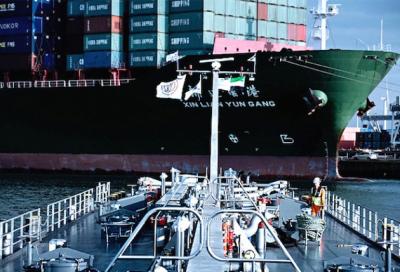SPLASH24/7, 9 February 2016 - Larry Rumbol from Parker Kittiwake on the importance of condition-based monitoring.
Despite the benefits of effective condition monitoring and reliability centred maintenance practices being well established, all too frequently the approach to vessel maintenance is ad hoc rather than strategic. The foundation of an effective maintenance strategy is a detailed understanding of the processes that are critical to the operational safety and efficiency of a vessel.
By taking a proactive approach to monitoring the health of vital equipment and machinery, operators can achieve better control of the risks whilst also maximising an asset’s return on investment. Through early identification of damage or accelerated wear in the system before the potential to cause failure has been realised, it becomes easier to achieve maximum uptime for minimum cost. Furthermore, the costs and cash flow impact can be spread across the year through the ability to schedule planned equipment overhauls with the least impact on vessel operation, and by reducing the time required for manual fault finding (which is not always conclusive).
The technical challenge of condition-based maintenance is acquiring the right information at the right time. Historically, seafaring engineers have relied upon planned – or periodic – maintenance, backed up by what they can physically hear and see during equipment inspections. Advances in condition monitoring technologies have allowed the industry to move beyond this approach, ensuring that potential issues are identified at the earliest possible opportunity and giving operators the time they need to take preventative action.
Advances in digitalisation are profoundly changing the way marine maintenance is conducted. As the technology continues to develop, the analysis of a continuous stream of data is increasingly relied upon to inform changes to operational processes and maintenance scheduling, helping companies optimise the performance of their assets and consequently, the efficiency of their operations. One of the industry’s most vocal advocates of proactive condition monitoring is engine manufacturer Wärtsilä, a company that has made itself a market leader by continuously identifying improvements that minimise the likelihood of equipment failures for its customers. As Magnus Miemois, its director of field services, has been quoted as saying, “For shipowners, uptime is the most crucial factor affecting quality and profitability.”
Condition monitoring tools are the first line of defence for identifying issues with critical machinery and equipment, yet the well established benefits that these tools can deliver is frequently overlooked. For example, one of the most critical parts of a vessel’s engine is the cylinder liner. Monitoring the level of wear in the system not only prevents unexpected repair bills and downtime, but will also help to extend operational life – a not insubstantial benefit when you consider that the replacement cost can often exceed $65,000 for each engine cylinder liner for parts alone. With multiple liners per vessel as well as the additional costs associated with repair and unplanned downtime factored in, this figure quickly grows into hundreds of thousands. Matson – the global carrier – recently installed a condition monitoring suite on several of its vessels as part of its ongoing commitment to reliability. The ROI proved almost immediate for Matson as on the first voyage after installation, the condition monitoring sensors indicated increased wear in cylinders on the vessel R.J. Pfieffer, and upon investigation, Matson detected damaging levels of cat fines in the fuel system. This early intervention allowed the operators to identify the cause of the issue and address the problem before damage occurred, and preventative maintenance took place during the ship’s passage to the next port avoiding expensive downtime.
As mandatory sulphur levels in fuels drop, levels of cat fines are on the rise as refiners seek to extract more distillate from a barrel of oil. Indeed concerns were highlighted earlier this year by leading fuel testing and inspection company Veritas Petroleum Services (VPS). VPS reported that even when fuels have tested well and no chemical contaminants have been observed, they believe that cat fines can still remain undetected, posing a significant risk to critical machinery. Indeed further issues can occur when cat fines that may have collected in the settling tank are stirred up during bad weather due to the motion of the vessel.
Cat fines are causing real problems for shipowners and operators. Fortunately there are recently developed condition monitoring tools on the market which can provide mariners with a picture of the level of cat fines during the on-board fuel delivery. It’s an issue that Gard – the largest Protection & Indemnity insurer among the thirteen members of the International Group of P&I Clubs – and many other insurers have been warning about in their circulars for a number of years. More and more frequently in our conversations with insurers, we’re hearing that whatever damage the presence of cat fines has caused, insurers are repeatedly looking to ship operators to provide evidence of due diligence as to their detection and avoidance of said damage.
Technicians need easy access to objective, accurate and detailed information, rather than relying on subjective intuition. Condition monitoring equipment provides operators with a suite of tools and information that enables them to stay one step ahead in preventing accelerated wear and avoiding damage. In an economic downturn, the natural instinct for austerity can be a difficult one to avoid. However, companies who choose to use this economic circumstance as an opportunity to distinguish themselves by investing in prioritising asset integrity will benefit from the resulting impact on their reputation as a trusted ship operator who is proactively driving the highest standards in safety, reliability and profit protection. Condition monitoring not only protects assets but also the bottom line.

